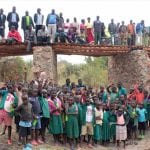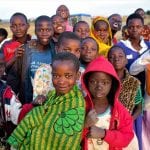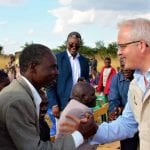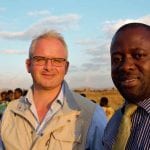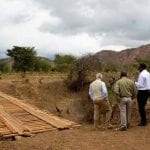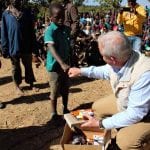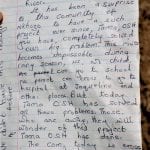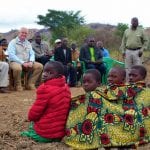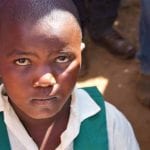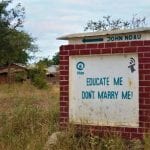Building bridges
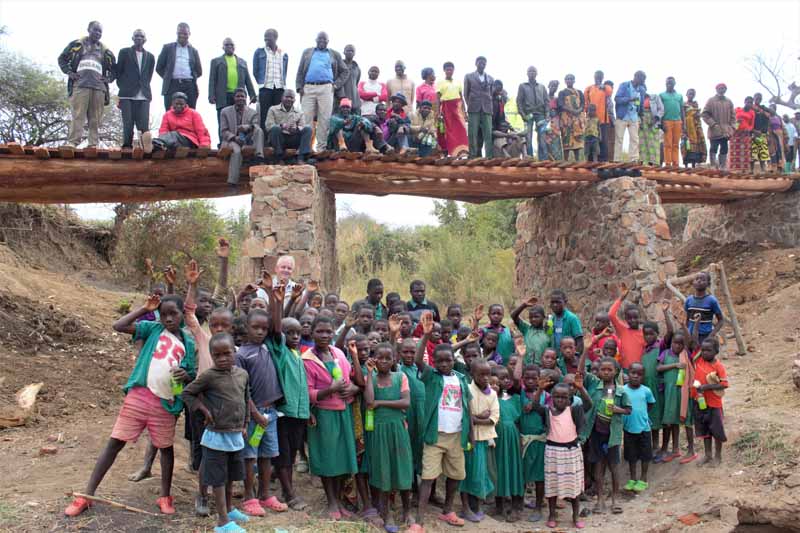
The ECLT Foundation is helping Malawi keep children out of the tobacco fields.
By Timothy S. Donahue
It’s changing. A positive impact is being made. Projects are being completed, and complicated lives are getting a little less difficult in Malawi, where child labor in tobacco communities has been a long-standing problem. Thanks to the contributions of the Eliminating Child Labour in Tobacco-Growing Foundation ECLT, several bridges are being built across small streams that become raging rivers during the rainy season and prevent thousands of children from accessing schools and healthcare.
It’s not just bridges; the ECLT has also completed a cooperative project to build three much-needed schoolhouses and living quarters for teachers in Mankhamba, a rural tobacco growing village in the Ntchisi district of Malawi. During Tobacco Reporter’s recent visit to the country, which is one of the poorest in the world, David Hammond, executive director for the ECLT, said that the projects fall in line with the organization’s new commitment to making the greatest local impact with its limited funding. Hammond, a non-practicing English barrister, former military seafarer and retired Royal Marines officer, took the lead at the ECLT in October 2017.
“School teachers don’t have to walk up to 15 kilometers a day carrying books and supplies anymore. Teachers now have the ability to live in the village, and that really has a great positive effect. We have seen attendance increase in schools, and the district education office has allocated another teacher, so already things are moving just from that one small investment,” said Hammond. “Now people are getting more involved in their communities because we are showing them it is possible. It’s about the community having ownership. We can’t solve all the problems, so we must choose what we can do and make the greatest impact with what we have available.”
The work in Mankhamba was made possible by a $15,000 investment from the ECLT, according to Innocent Mugwagwa, program manager for the organization. He said that when the foundation first arrived in the village, the school had 300 kids and only two classrooms. The headmaster’s office was also dilapidated. “Materials were getting destroyed, the teacher housing had no roofs, and the village was struggling to complete them. David [Hammond] introduced this concept of ‘see it, fix it’ so we fixed these school issues. If we see something that needs to be fixed, and even though it isn’t maybe in our budget, we put a lot of effort into finding the resources needed to fix the problem.”
This “quick impact intervention” is part of the ECLT’s broader work in Malawi where the foundation has reached more than 190,000 children, farmers and their families since 2013. Through ECLT’s larger Clear II project, a water pump was also installed near both the school and the fields, providing safe water for students and farm workers, as well as helping with irrigation, according to Mugwagwa. In addition to improving sanitation at the school, having a well nearby allows girls to go to more classes because they do not have to spend time walking to fetch water. The parents have also started a school feeding program, which will attract students and retain them in school.
One challenge for the ECLT is that it’s complicated to get things built in Malawi, according to Andrew Namakhoma, ECLT’s Malawi project coordinator. “This is especially true when building housing for people. You need to get the materials and do it in a way that benefits the local communities,” he said. “We don’t want to give the money to the people in a city hundreds of miles away to do the work; we want the money to become a part of the local economic community.”
Throughout this project, ECLT has collaborated with numerous local partners, which is the key to ensure that communities are engaged and feel ownership of the projects, Namakhoma said, adding that community engagement is vital as “the sustainability of the projects is somehow guaranteed.”
Mugwagwa explains that while the ECLT’s contribution was financial, the community provides the work and secures materials. It’s a joint effort. “Without the commitment of the local community and that important local knowledge, this would not be possible at all. We mobilize parents to form their own clubs and learn from each other and depend on each other. They pool their resources, and it’s really a benefit to the community,” said Mugwagwa. “One of the most exciting things is that the quality of education improves. It is one of the biggest problems when trying to address child labor. Kids go to school, but if they don’t learn, it doesn’t serve them well, so we are also implementing literacy programs where kids can get additional educational help outside of the school.”
During Tobacco Reporter’s visit, the ECLT handed over completed bridges in the central Malawi villages of Mponela and Kasiya. An additional one in the northern Malawi village of Rumphi will be complete before the rainy season begins. Four bridges in total have been constructed in partnership with the Tobacco Association of Malawi (TAMA). They will make travel easier for more than 15,000 students, teachers and community members in these rural tobacco-growing areas.
Each bridge was built by local workers using an average of $5,000 in funding from the ECLT, according to Mugwagwa, who added that great successes can be made by taking a lot of small steps. “We can’t tackle everything; we have to choose. Bridges are something that can be built and have a long-term impact,” he said. “We will continue to work in Malawi, and there is still so much more needed here. We have built a safehouse for abused women and children in Rumphi. We engage at the government level by informing policy and keeping the social dialogue going. There is so much we can do, but we need to focus on those things that make the greatest impact.” To further help improve the local community, the ECLT insisted that each village that received funding to build bridges train five locals to help with construction.
Reality check
The struggle is real. According to the International Labour Organization, more than 152 million children engage in child labor worldwide, with nearly 73 million doing hazardous work. Agriculture is easily the largest contributor to the issue, with over 71 percent (more than 108 million children) working in the sector, mostly as unpaid family laborers. Even with slight declines recently, sub-Saharan Africa remains the largest culprit.
In Malawi, most of the child labor is family oriented. When children in farming communities cannot go to school, they are more likely to work in fields with their parents. It isn’t about pay. It is illegal for kids aged 5–12 to work. From ages 12–14, children can work but not doing dangerous jobs. Then, from ages 15–17, children can work hazardous jobs only as part of an apprenticeship or training.
Founded in 2000, the ECLT provides collaborative answers for children and their families that impact the root causes of child labor. The organization is funded by grants from stakeholders in the tobacco supply chain, including growers, leaf suppliers and manufacturers. The ECLT is a member of the United Nations (U.N.) Global Compact and a holder of U.N. Economic and Social Council (ECOSOC) special consultative status.
Hammond said that the ECLT is a team that is always learning from its experiences. According to him, it isn’t about placing blame or pointing fingers because something didn’t go exactly right. “The ‘test and adjust’ approach is learning and then improving the process the next time. It’s about always improving and making the impact matter,” he said. “Impact comes from different levels. Boots on the ground is one type of impact. Informing legislation and working with governments to fight the problem head on is another. We act as a catalyst. We act as a bridge to communities, between them and local government.”
Looking back on the mission in Malawi, Hammond says seeing the projects on the ground has given him great faith in the ECLT system. “My biggest learning points have been that with more focused interventions, we are making a larger impact, and with a better understanding of how things are happening on the ground, we can speed up the process and cut through a lot of the red tape,” he said Hammond. “We can make sure we are meeting a community’s needs. In short, we need more eyes on the ground as we move forward. It doesn’t start and end in one community—we are here for the long haul.”
In 2014, the ECLT adopted its Pledge of Commitment and Minimum Requirements on combatting child labor, which was signed by 13 companies. Hammond says that to make the pledge more effective, the organization needs to hold people accountable, otherwise it’s a pointless exercise. “[S]uccess starts with its integrity and longevity. The 650,000 families and children we have impacted can attest to this,” he says. “Our impact is at the front lines and ultimately is doing communities good. They take the lead on these projects. We are a trusted and objective supporting voice.”
In the coming months, the ECLT will be starting projects in Guatemala and Indonesia and will continue on to wherever child labor is an issue. The organization needs more funding too, says Hammond. “We need to increase levels from the tobacco sector and look to diversify our funding streams. We can possibly look to being paid for consulting services to expand our offerings portfolio,” he says. “We are meant to be the leader in the fight against child labor globally. We can achieve this through showing that we really do make an impact and finish projects. We are not just an organization that has a lot of projects going on, but completing projects is very important. With a small amount of resources and a professional team, we can instigate and deliver real impact that has life-changing effects on the lives of the communities we are working in.”
Alongside the pledge, Hammond says he can see a future where the ECLT may have satellite offices around the world—maybe they even become regional offices. “We will take all of the lessons learned, and our core values and plant those ideals in countries around the world. It’s about hiring the right people and magnifying our effect—a franchising of our social model. Our goals are to go in, leave our footprint and provide in-country community sustainability for the long term. We will deliver on our goals and promises. We will do it because we believe in what we do.”
